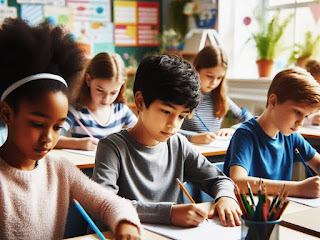Unlocking Learning Potentials: Gyanpeeth Experience of Knowledge Transfer
The Gyanpeeth Experience of school workspace represents a paradigm shift in education, unlocking the full potential of learners through innovative approaches to knowledge transfer. By embracing motorized learning, task-based activities, personalized feedback, experiential learning and collaborative culture, the gyanpeeth approach equips pre-training students with the motor skills and cognitive mindset needed to thrive in the 21st century.
Taxshila Model Knowledge Transfer: Gyanpeeth Experience
📌 Dive into the world of learnography, a dynamic approach that facilitates the transfer of knowledge from transfer books to the minds of learners through experiential learning.
As we continue to navigate the complexities of the modern world, the gyanpeeth experience serves as a beacon of hope, empowering active students to become lifelong learners and change-makers in their communities.
Highlights:
- Gyanpeeth Experience
- Experiential Learning
- Motorized Knowledge Transfer
- Task-Based Learning
- Brainpage Making Experiences
- Personalized Feedback
- Progress Tracking
- Experiential Learning Principles
- Collaborative Miniature School Learning
- Peer Learning
At the heart of the gyanpeeth experience lies the concept of "learnography" - a dynamic process that facilitates the transfer of knowledge from source books to the brain through brainpage making process and experiential learning. This innovative methodology not only equips students with essential academic knowledge but also fosters critical thinking, problem-solving skills and lifelong learning habits.
One of the core principles of gyanpeeth experience is motorized knowledge transfer. Unlike passive learning methods where students simply absorb information from listening to teaching, motorized knowledge transfer emphasizes active participation and engagement. By incorporating physical movement into the learning process, students are able to internalize concepts more effectively and retain information for longer periods.
Central to the gyanpeeth experience is the integration of task-based learning. Instead of rote memorization and theoretical concepts, students are presented with real-world tasks and challenges that require them to apply their knowledge in the practical scenarios of motor science. This hands-on approach not only enhances comprehension but also cultivates problem-solving skills and creativity.
Moreover, the gyanpeeth experience of Taxshila Model leverages technology to personalize the learning journey for each student. Through sophisticated tracking systems and analytics, pre-trained learners can monitor their brainpage progress, receive personalized feedback, and identify areas for improvement. This individualized learnography ensures that no student is left behind and that each one has the opportunity to reach their full potential.
Another distinguishing feature of the gyanpeeth experience is its emphasis on experiential learning. By immersing students in real-life experiences and encouraging cognitive reflection, the program enables them to make meaningful connections between theory and practice. Whether through brainpage making process, task-based learning or collaborative teamwork in miniature schools, students are actively engaged in the learning process, leading to deeper understanding and retention of knowledge transfer in book to brain learnography.
Furthermore, the gyanpeeth experience fosters a culture of collaboration and competition among students to demonstrate the taxshila levels of development in performance. Through problem-solving activities, peer learning and friendly competitions, students are empowered to push themselves beyond their comfort zones and strive for excellence. This collaborative teamwork transfer environment not only enhances learning outcomes but also promotes learnography and social skills, reflecting the changes in brain, body and behavior.
In the ever-evolving landscape of school dynamics, unlocking the full potential of learners has become a paramount goal in the community.
The traditional methods of teaching often fall short in catering to the diverse learning needs of students. However, the gyanpeeth experience offers a transformative approach to knowledge transfer, revolutionizing the way students engage with learning materials.












Comments
Post a Comment